Everything you need to know about plastic ducting!
In this article, we will be explaining the benefits of plastic ducting, and then giving useful installation, usage advice and technical info.
By the end, you should have a thorough knowledge of the benefits of plastic ducting, which type you should get, and the pros and cons of each.
If you find you still have any questions left at the end of the article, let us know in the comments below and we will add anything you need answering.
If you need a question answered quickly, please call us on:
020 8463 9696
and we will be happy to answer any questions you have.
Let’s get started!

What’s the Difference Between Flat and Round Ducting?
If you are installing an extractor fan or passive ventilation system to control condensation or mould growth in your home, you may well need plastic ducting to vent to the exterior of your property.
There are two main types of plastic ducting, round and rectangular or “Flat”. There are a few differences between the two, and depending on your circumstances, you may need to choose one over the other.
Round plastic ducting has the greatest airflow performance but can be more difficult to conceal and install, whereas flat channel duct can be concealed within voids and flush fit, but has a lower airflow rate due to its shape.
The largest difference between round and flat plastic ducting is their “free area” which is essentially the amount of space available within the duct.
The more space available, the more air can flow through and a greater level of ventilation can be achieved.
Taking the example of 100mm round pipe and system 100 flat ducting, we can see there is a startling difference between the rate of air that can travel through the pipe at any one time.
Kair brand 100mm round plastic ducting pipe has a free area of 7,855mm².
Kair brand system 100 (110x54mm) flat channel ducting lengths have a free area of 5,424mm².
That’s a difference of 2,431mm²!!
It may seem the obvious choice to go for the round and larger free area so that you can ventilate your property more efficiently, and in most cases, this would be true.
However, as you will see from the pros and cons list of both types of plastic ducting next, this may not always be the case.
Round Pipe:

Round ducting has the highest airflow performance, this is due to a wider diameter increasing its free area. The lack of corners also decreases resistance within the pipe, which allows for higher airflow rates and higher rates of ventilation.
It is recommended for most applications where space is available for installation. Its main purposes are for long ducting runs, whole-house ventilation systems, HVAC systems, bathroom, toilet and utility room extract fan venting, or any occasion where high rates of extraction are required.
Round PVC ducting pipe can be used for venting exhaust odours and steam from cooker hoods, although flexible ducting may be easier to install in many instances.
Sizes are available from 100mm, 300mm, 500mm and 600mm diameters, with sizes between these dimensions also available. Both round and flat ducting have smooth inner surfaces to reduce air resistance and noise.
Pros & Cons of Round Ducting
| Pros: | Cons: |
| High Airflow | Difficult to conceal |
| Less friction | Poor results in low-pressure systems |
| Lightweight | More expensive than flat ducting |
| Corrosion-resistant | |
| Better for high-pressure systems | |
| Designed for HVAC systems |
Flat Channel Duct:

Flat channel ducting is ideal when a low profile is required due to lack of space. It can also be concealed and flush fit against ceilings and walls or within voids.
Please bear in mind that as a result of a lower free area, there is greater pressure created within a duct run. It is therefore essential that you check the manufacturer information for the fan you are planning to install within the run.
If the fan is extracting at a rate that is greater than the duct run can cope with, there is potential for the fan to overheat and burn out. This is both costly and unnecessary.
Flat channel plastic ducting is generally used for installations requiring low extraction rates such as bathrooms, toilets, and utility rooms. Sizes available from 110x54mm to 310x29mm.
Pros & Cons of Flat Channel Ducting
| Pros | Cons |
| Corrosion-resistant | Creates more noise within duct run |
| Lightweight | Poor results within high-pressure systems |
| Easy to flush fit and conceal | Increased air resistance |
| Ideal for low-pressure applications |
How to Connect plastic ducting
Installing and connecting ducting pipes and channel lengths is easy as they are “female”, and will accept “male” connecting parts such as bends or reducers with a simple push-fit connection. Once pressed together, they can either be sealed with ducting sealing tape or sealant (caulking).
Simply press the male connecting part into the female pipe. You will feel the connection between the two items become tighter as you press them into each other. Ensure they are pressed into each other as tightly as possible to reduce the chances of pressure loss within a duct run.
Once you have made the connection between the pipes or flat channel, you can seal the connection by using either duct sealing tape or a duct sealant, which will be discussed later in the article.
Whether or not you decide to install flat/rectangular or round ducting, there are general guidelines that apply to both when installing ducting within a property.
It is very important that you check the power of the ventilation system you will be installing. If your extractor fan has a low output but you use round ducting, you will find you struggle to exhaust the stale air at an acceptable rate.
If instead, you have a very powerful fan with a high
l/s (litres per second), but have used too plastic ducting with too small of a free area, you may well find your extract fan has burnt itself out within a few weeks of installation.
The extract fan manufacturers will have an advised duct run length that their units can handle, and an experienced installer will be able to tell you how many bends the system can cope with.
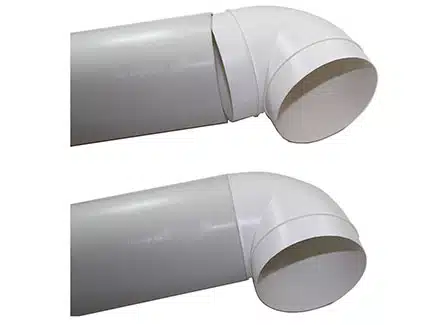
Every bend that you add to a duct run adds additional resistance and therefore lowers the overall output of the unit. This also applies to branching off to additional runs.
There are calculators available online, however, if you are inexperienced, it may again be more efficient to discuss your system with an installer, or one of our advisors at i-sells on 020 8463 9696.
Should you require a combination of both round and flat ducting lengths due to space restrictions or any other reason, you can use an adaptor.
This lets you adapt round ducting run to flat, but again, it is vitally important that you calculate whether or not the unit you are using to extract will be either able to cope with a restricted ducting size or is powerful enough to maintain its extract rate with larger diameter ducting if adapting from flat to round.
Thermal Ducting
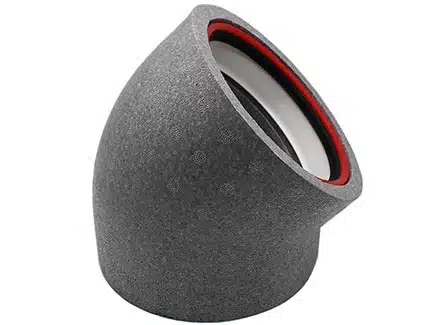
If your duct run is going to be travelling through any colder areas such as loft voids, it is recommended that you make use of insulated ducting.
Thermal ducting reduces the likelihood of condensation forming within the ducting itself, which will decrease the chance of any mildew or mould forming.
It is also due to potential condensation formation, that we recommend you install any duct runs to flow away from the ventilation unit rather than towards it. This prevents any condensation that has formed travelling towards the unit and potentially causing harm to it.
To reduce the diameter of your duct runs, you can connect a length of ducting to a reducer. Multiple sizes of plastic ducting reducer are available and use simple push-fit connections.
If venting an extract fan, it is recommended that you check the power of the unit. Changing the sizes of the ducting can increase or decrease pressure within the run, therefore either increasing strain on the unit or decreasing its efficiency.
i-sells highly recommends using “Kair” brand of ducting to complete your duct run. Due to differences in the manufacturing process, If you mix and match ducting brands, they may not join together smoothly even if they are listed as being the same size.
Keeping the ducting to one brand will reduce the likelihood of this happening.
How to cut plastic ducting
If your pipe or flat channel needs to be cut, after measuring and marking with a pencil, use a table saw (mitre saw) to get a straight and neat cut through your PVC pipe. If you do not have access to a table saw, a hacksaw can be used.
Ensure when using a hacksaw you keep the cut as straight as possible. Using a pipe vice and a smooth controlled action on a handsaw will help you to achieve this.
If your cut is crooked, you will have a much harder time correctly joining lengths of pipe to each other or to connecting parts. You will also find that pressure loss is a real issue.
Once you have your cut pipe, rub-down the point at which you made the cut with coarse sandpaper to give yourself a smooth surface to work with. Much like with cutting crookedly, if your cut is not clean, you risk pressure loss and connection issues.
Sealing Plastic Ducting

Aluminium duct tape is a very common method of sealing plastic duct runs; however, cloth tape also provides a very tight and very long-lasting air-tight seal. Ducting sealant or caulking is a better option to give an airtight but permanent seal.
Be sure when applying the duct tape to apply it slowly and without any creases, as these may allow air to leak and increase pressure loss within the duct run.
Duct tapes give a very secure but temporary seal, if you are looking for a completely air-tight and permanent seal, then silicone sealants can be used.
It is said that you should check your duct sealing tape every year to ensure that an airtight bond is still being achieved.
Clear or grey coloured sealants are available, and once set, they provide a very strong seal that cannot be undone, this is perhaps why people prefer to use duct tape, but for the lowest air pressure drop, a ducting sealant is the best option.
It is usually unnecessary to prime and glue plastic ducting pipes, but if you prefer to do this to ensure a permanent seal, you can. Ducting sealant is specifically designed to create a very strong bond without this process.
Ducting sealant takes a little while longer to set than PVC glue, however, this is usually seen as a positive thing, as it gives you time to make any last adjustments before it sets solidly.
Plastic Ducting Additional Info
They are most commonly made from a PVC Polystyrene or ABS plastic, and is less prone to corrosion than metal ducting, as condensation trapped within a duct run can corrode metal ducts over time.
i-sells plastic ducting comes in a glossy white finish, and this is the standard finish for most plastic ducting products, however other colours are available.
All of i-sells plastic ducting products have been tested for their airflow performance independently by BSRIA or BRE.
Painting Plastic Ducting
Plastic ducting can be painted using a paint colour of your choice. You may need several coats to achieve a less “patchy” finish. It is recommended that you rub-down the ducting you wish to paint with coarse sandpaper to allow the paint to adhere more thoroughly.
Use of standard off the shelf paints such as emulsion may give poor results as it is prone to flaking and peeling if not primed first. Instead, you may be better off using paints such as a self undercoating gloss as this reduces time and provides a better and longer-lasting finish.
It is usually unnecessary to prime the ducting before you paint it, and in some circumstances, you may not even require rubbing down the piping with sandpaper first. I would advise trying a patch of the ductwork first to see if this is the case, and if the emulsion doesn’t adhere, please follow the steps outlined above.
Fire Rated Plastic Ducting Products

When connecting one room to another via a plastic ventilation duct, there is a possibility that you create an easy way for flames to travel from one room to another in the event of a fire.
To prevent this, fire-rated products are designed for use when a single duct run connects one or more rooms. They are generally made up of what are known as “intumescent materials”, which rapidly expand when exposed to high temperatures.
Fire cuffs or sleeves are designed to be placed around the plastic duct within the void in the wall between joining rooms.
The concept is that the high temperatures generated from a fire in one room will cause the fire cuff or sleeve to start rapidly expanding, which then crushes the pipe it sits around, blocking the flow of gasses and flame to the adjacent room.
For certain properties, fire-rated products such as these are mandatory.
Ducting Fittings:
PVC pipes/tubes and accessories such as Pipe Bends, pipe connectors, couplers, attenuators, grilles, fire-rated products, hose pipe connectors, pipe reducers etc are all available to help you complete your duct run at the plastic ducting category on
i-sells.co.uk.
Our grilles come in a multitude of colours and varieties to suit any applications, and i-sells even supply complete kits for cooker hoods, tumble dryers and air conditioners, making installation easier than ever.
where can I buy plastic ducting UK?
i-sells.co.uk is one of the UK’s largest retailers of ventilation products, specialising in both plastic and metal ducting.
We stock and offer next day delivery on thousands of products, with free delivery on any order over £100.
We stock, pipes, flat channel lengths, bends, adaptors, connectors and everything in between.
To make life even easier, we also stock ducting kits that suited for multiple purposes to reduce time and hassle on installation.
We deliver to all mainland UK, but also offer delivery for overseas projects too.
If you need ducting of any kind, you can find it at
i-sells.co.uk
Conclusion
Plastic ducting comes in round and flat types. Round ducting is better suited for high-pressure installations but is harder to conceal. Flat channel ducting can be flush fit and hidden in voids but is inappropriate for high-pressure systems.
If you have any further questions that you would like answered, please let us know in the comments section below, or give us a call on 0208 463 9696.

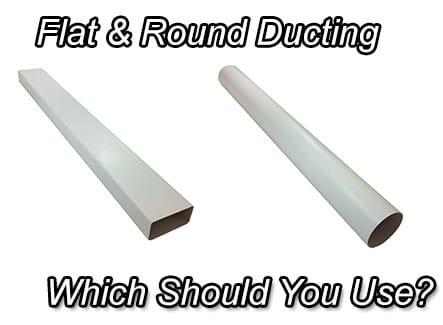


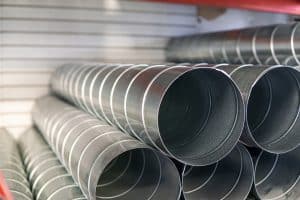
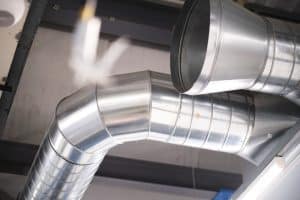























Add comment
You must be logged in to post a comment.